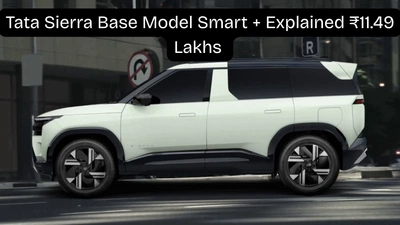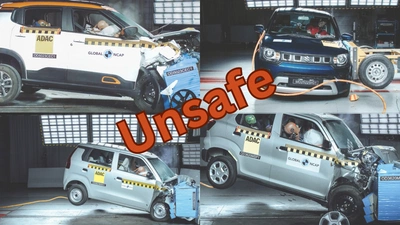You Next Mahindra SUV Will Be E85 Compatible
Mahindra's NU-IQ modular platform is being developed to accommodate flex-fuel engines capable of running at E30
By Salil Kumar
Published August 23, 2025

Mahindra’s Flex-Fuel Push Gains Urgency Amid Rising E20 Backlash
India’s transition to cleaner, ethanol-blended petrol has hit a snag. The recently filed RTI by Bengaluru man has revealed that petrol pumps have already started blendy E20 in all varieties of gasolines power and regular.
The nationwide rollout of E20 (20% ethanol blend)meant to reduce oil imports and carbon emission has triggered widespread concern among vehicle owners. Drop in mileage and engine problems are the two most common concerns as per Autocar survey
Car owners are alarmed, reporting mileage drops of 15–20%, accompanied by rough idling, sluggish acceleration, and unexpected breakdowns. This isn’t isolated. A Local Circles survey covering 36,000 owners found two out of three vehicles model year 2022 or earlier underperforming under E20.
Adding fuel to the fire, insurers have flagged they may refuse claims for engine damage traced back to E20 usage in non-compatible vehicles calling it “gross negligence.” In response, Maruti and Hero are exploring retrofit kits priced around ₹4,000–6,000 to help older cars adapt to E20 usage.
How Flex-Fuel Technology Turns the Tide
While the E20 shift has exposed cracks in preparation, flex-fuel engines offer a long-term solution. Essentially, these engines adapt seamlessly to any ethanol-petrol ratio from traditional petrol to E30 or beyond.
pcoming flex-fuel engines are being engineered with several crucial upgrades to ensure compatibility with higher ethanol blends. One of the most important additions is a real-time ethanol sensor, which continuously monitors fuel composition and adjusts the air–fuel ratio accordingly.
To withstand ethanol’s corrosive properties, the entire fuel delivery system including seals, hoses, and injectors is being built from more durable, ethanol-resistant materials. Cold-start performance is another challenge with high ethanol content, so fuel rail and injector heaters are being incorporated to ensure smooth ignition even in lower temperatures.
Finally, the engines themselves are being recalibrated to deliver consistent efficiency and performance across varying ethanol percentages, from regular petrol up to E30 and beyond. Some countries, like Brazil where E100 is pretty common have taken decades to fine-tune this technology, ensuring consumer trust through affordability and infrastructure.
Mahindra’s Calculated Leap Forward
This is where Mahindra’s forward thinking stands out. Their upcoming NU-IQ modular platform is being developed to accommodate flex-fuel engines capable of running at E30 or higher. The timing couldn’t be better: India is accelerating its ethanol strategy, targeting E30 by 2030 or possibly earlier.
By integrating flex-fuel readiness now, Mahindra ensures customers won’t face the performance pitfalls or warranty shocks that many are experiencing today. Retail-ready E20 vehicles began rolling out in 2023, but the bigger leap to E30 without engine damage requires advanced engineering now underway.
Mahindra aims to edge into the market around 2027, aligning with the upcoming CAFE-III emissions norms, which could offer regulatory benefits for flex-fuel models. This gives them both a technological and policy-driven advantage.
At Auto Expo 2025, Hyundai, Maruti, Tata, and Toyota unveiled flex-fuel concept models Creta, Punch, Wagon R, and even hybrids like the Innova Hycross showcasing E20 to E85 readiness.
Write a comment
Comments
No comments yet. Be the first to comment!









